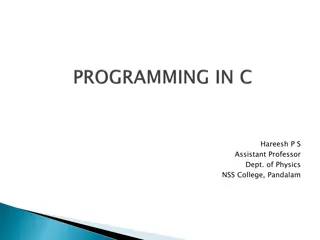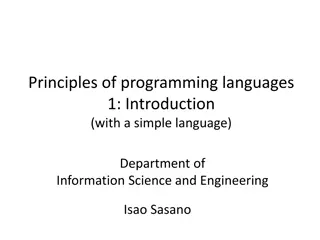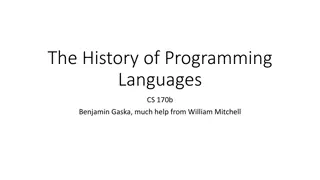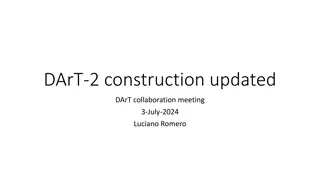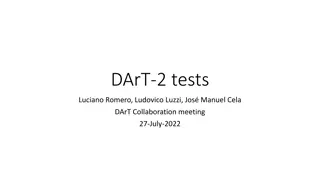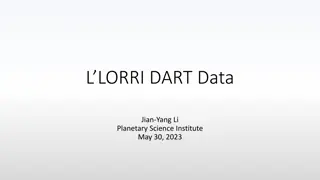Introduction to Dart Programming Language
Dart is an object-oriented language developed by Google primarily used for building websites, servers, and mobile apps. It offers libraries, an editor, a virtual machine, and a compiler to JavaScript. Learn about its history, key concepts like objects, classes, and variables, and how Dart tools help in writing efficient code.
Download Presentation

Please find below an Image/Link to download the presentation.
The content on the website is provided AS IS for your information and personal use only. It may not be sold, licensed, or shared on other websites without obtaining consent from the author.If you encounter any issues during the download, it is possible that the publisher has removed the file from their server.
You are allowed to download the files provided on this website for personal or commercial use, subject to the condition that they are used lawfully. All files are the property of their respective owners.
The content on the website is provided AS IS for your information and personal use only. It may not be sold, licensed, or shared on other websites without obtaining consent from the author.
E N D
Presentation Transcript
Dart Omar Ansari, Kenneth Jones, Isaac Wilder
1. Overview l Object Oriented Language l Developed By Google l Primarily used for building websites, servers, and mobile apps l Provides librariries, an editor, a virtual machine (VM) and a compiler to javaScript l Created to improve the developers experience based on performance and productivity
2. History l Unveiled at the GOTO conference in Denmark on October 10, 2011 l Founded by Lars Bak and Kasper Lund l Bak is a Danish computer programer who previously developed the V8 JavaScript Interpreter for Chrome l V8 is mostly responsible for Chromes success l Google then moved most of the V8 engineers to the Dart project
2. History l ECMA (European Computer Manufacturers Association) formed a technical committee TC52 to work on Dart Language Standards l TC52 goals: 1) Develop Dart standards and standards for libraries that extend the capabilities of dart 2) After completing 1, investigate the future direction of Dart standards, and to evaluate and consider proposals for additional technology 3) Develop test suites that will be used to verify the correct implementation of these standards. 4) Establish/Maintain liaison with other TCs and with other SDOs (Standards Development Organizations) as appropriate to facilitate/promulgate the work of the groups
3. Concepts Everything you can place in a variable is an object, and every object is an instance of a class. All objects inherit from the Object class. Specifying static types clarifies your intent and enables static checking by tools, but it s optional. Dart doesn t have the keywords public, protected, and private. If an identifier starts with an underscore _ , it is private to its library. Identifiers can start with a letter or _ , followed by any combination of those characters plus digits.
3. Concepts Dart parses all your code before running it. You can provide tips to Dart, for example, by using types or compile-time constants, to catch errors or help your code run faster. Dart supports top-level functions. You can also create functions within functions (nested or local functions). Dart supports top-level variables, as well as variables tied to a class or object (static and instance variables).
3. Concepts Dart tools can report two kinds of problems: warnings and errors. Dart has two runtime modes: production and checked. Production mode is the default runtime mode of a Dart program, optimized for speed. Production mode ignores assert statements and static types. Checked mode is a developer-friendly mode that helps you catch some type errors during runtime
4. Example String Interpolation
4. Example Asynchronicity
Comparisons l Descendant of the ALGOL language family, just like C, Java, C# and JavaScript l Dynamically typed language like Javascript, but Dart adds the optional type annotations to help catch errors earlier l Dart takes out a few features of JavaScript (Prototypes, Global Objects) causing the VM to streamline, enables faster execution and makes it easier to do code completion and re-factoring l According to the Dart Project When compared to JavaScript, Dart aims to be faster, more regular, and more scalable to large programs.





